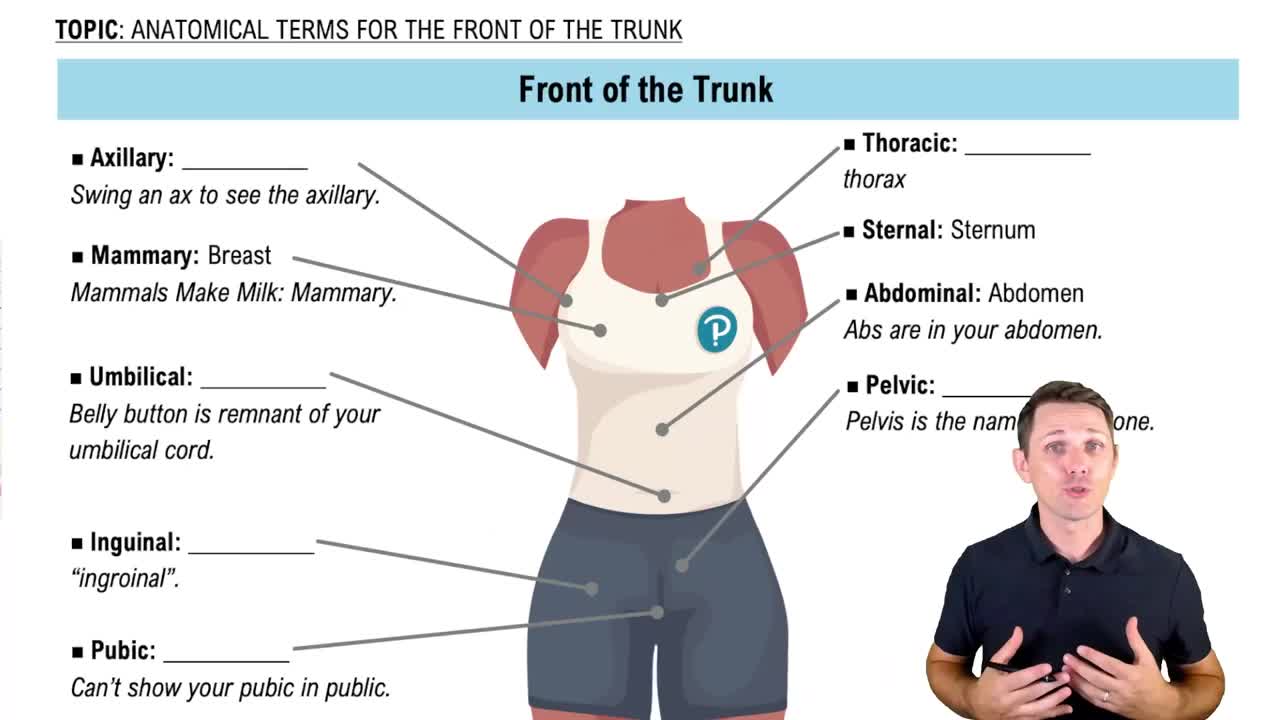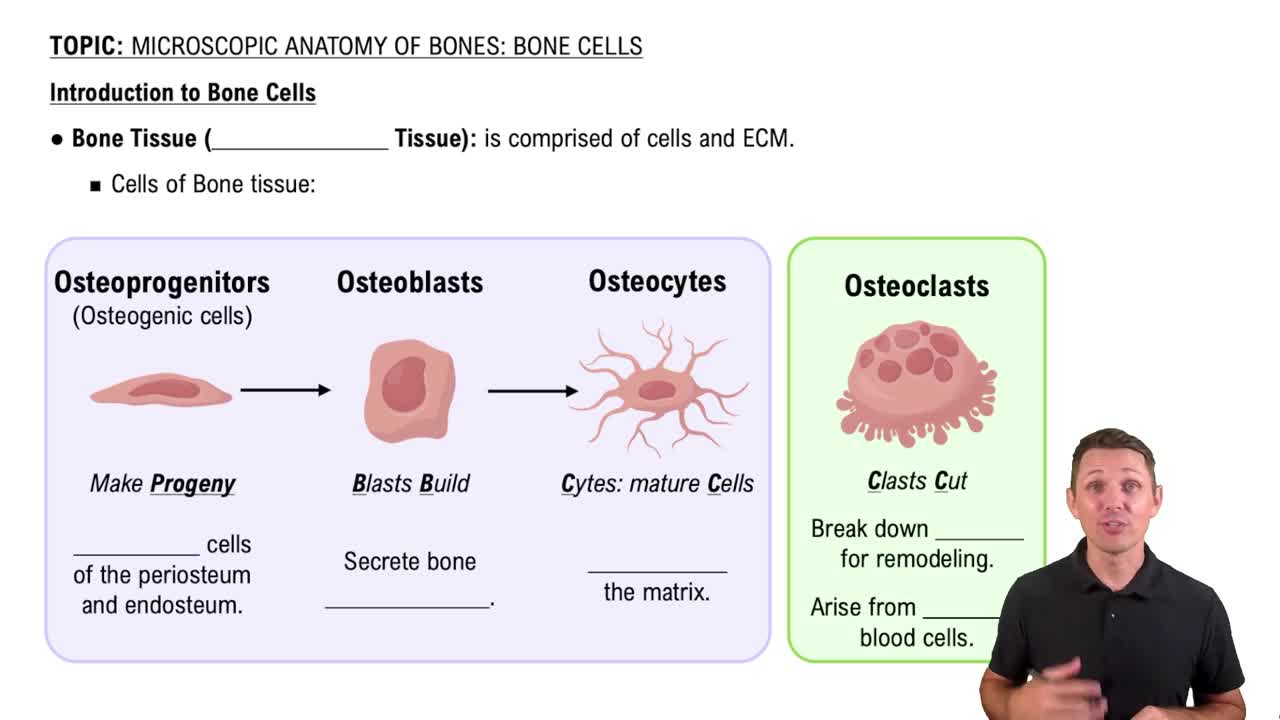Here are the essential concepts you must grasp in order to answer the question correctly.
Osteoid Seam
The osteoid seam is a thin layer of unmineralized organic matrix that is secreted by osteoblasts during the process of bone formation. This layer serves as a precursor to mineralization, providing a scaffold for the deposition of calcium and phosphate. The presence of the osteoid seam is crucial for the initial stages of bone remodeling and growth, as it indicates active bone formation.
Recommended video:
Calcification Front
The calcification front is the boundary between the osteoid seam and the mineralized bone matrix. It represents the area where mineralization occurs, as calcium and phosphate ions are deposited into the osteoid, transforming it into hardened bone. This process is essential for the structural integrity and strength of the bone, as it allows for the transition from a soft, organic matrix to a rigid, mineralized structure.
Recommended video:
Bone Remodeling
Bone remodeling is a continuous process involving the resorption of old bone and the formation of new bone, allowing for the maintenance of bone strength and mineral homeostasis. This process is regulated by various factors, including mechanical stress, hormones, and cellular signaling. Understanding bone remodeling is essential for comprehending how osteoid seams and calcification fronts contribute to the overall health and adaptation of bone tissue in adults.
Recommended video:
Introduction to Bone Cells
 Verified step by step guidance
Verified step by step guidance


